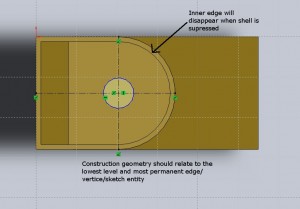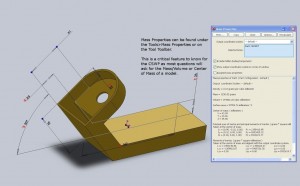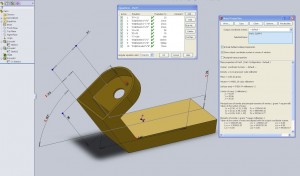After sketching on the CSWP prep list comes the basic 3D features. For the exam it’s possible to get by with only the basic features if the model is designed correctly, although others may help significantly. The extrude and cut features should be fairly easy to figure out for any user who is accustomed to dealing with CAD design. Draw a sketch and extrude it into a 3D of said sketch or make a cut in the shape of the sketch.
Shell gets a little bit more in depth with the ability to select faces to keep or remove with the shell. Typically this is only a single face which is the opening of the part, however a part can be shelled with no faces selected which will result in a hollow component.
As with the sketch features the extrude and cut tools should be familiar to most users. The biggest issue with parts such as the one seen in the sample test is how and in what order to build the features. For the second problem on the test there are tons of ways to model the same thing all of which will yield the same answer. This is where dimensioning correctly can come in handy.
Dimensioning is critical and should be linked to features that will not change. Mid points, center lines and construction geometry are all very helpful in laying out a sketch. For example a hole can be centered between edges by drawing bisecting construction geometry lines first and then sketching the circle at the intersection point.
Make sure to look ahead though so that these construction lines connect to points that will remain even if some features are removed. In this example the lines extend to the outer edges not the inner edge, which will disappear when the Shell feature is suppressed.
Voila. 4 Features and a few basic equations and the first question is done. Another 30 seconds of changing variables and question 2 is out of the way as well. Now comes the biggest tip of all.
Of course things are easier with no time constraints and spread out over a few days. In the real test those two problems should take approx. 30 min to complete so practice is worth while. The exam will cover much more than just these basic but being able to quickly check off a few questions can be a huge boost to a tester’s score and will allow for more breathing room and time to check more complex models.
